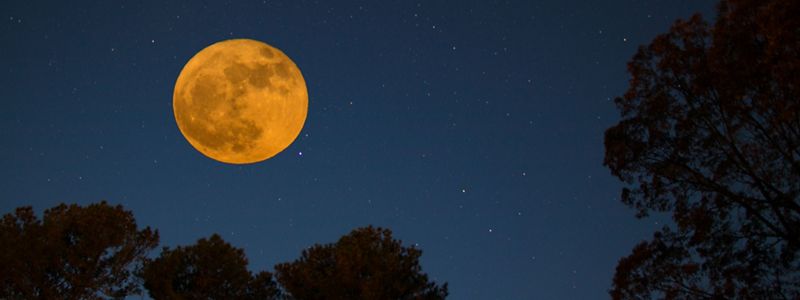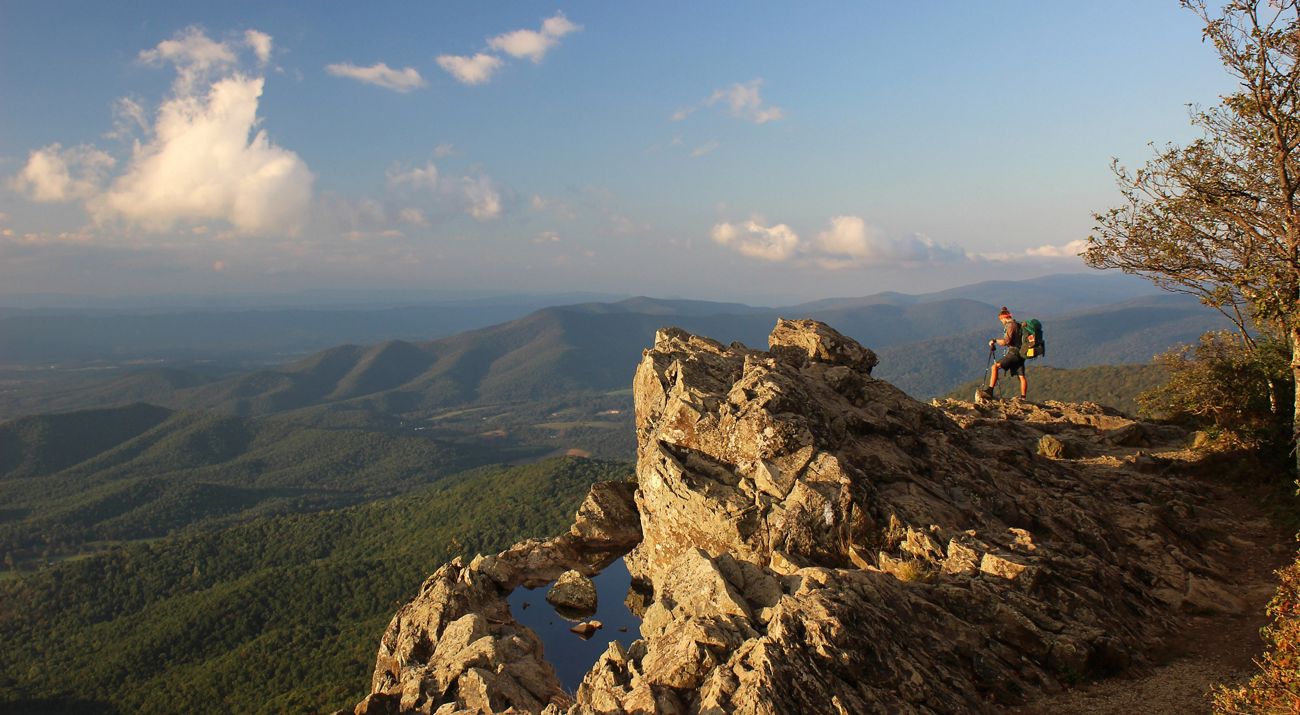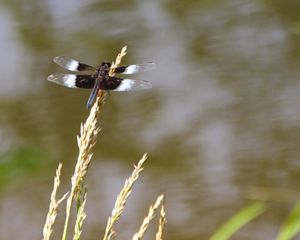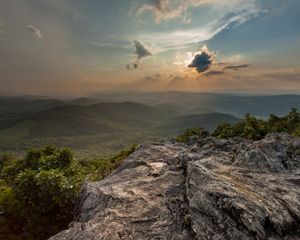Virginia Vacation Getaways
Our insider tips to help plan your visits to TNC preserves and public lands.
TNC manages more than a dozen preserves across Virginia where you can hike, paddle and simply enjoy connecting with the natural world. And since many TNC preserves are located near or nestled alongside public lands, you can easily connect multiple sites to create your own getaway.
TNC staff members and contributing photographers across Virginia have shared their favorite destinations and attractions. Read on for insider tips ranging from where to watch the sun rise to where to quench your thirst after a long day on the trail.
Scroll to browse all regions, or use the links below to jump to a specific area of Virginia.
Eastern Shore
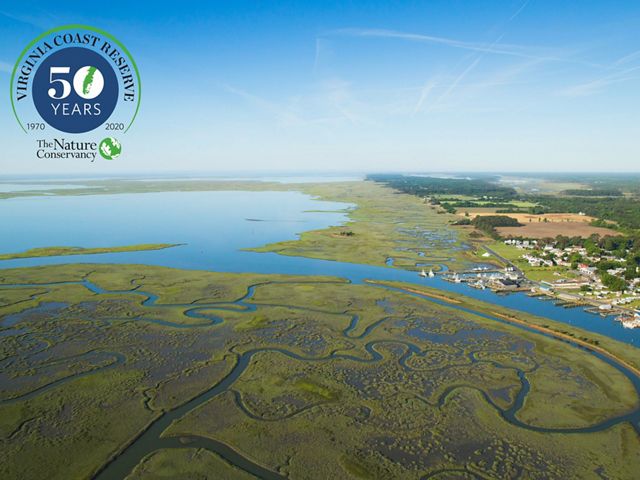
For more than 50 years, The Nature Conservancy’s Volgenau Virginia Coast Reserve (VVCR) has protected the longest expanse of coastal wilderness on the U.S. eastern seaboard. Start your visit at Brownsville Preserve, our mainland headquarters, and explore scenic marsh and forest habitats along our three-mile (round trip) William B. Cummings Birding and Wildlife Trail.
“Brownsville is my favorite preserve to watch wildlife because of the numbers of birds, turtles and other creatures that inhabit the open salt marshes,” says Ben Nettleton. Ben adds that his favorite view is “looking out to Hog Island from the south-end observation deck at sunrise or any clear day.”
If you’re an experienced boater, you can also enjoy low-impact day uses such as hiking, bird watching, surf fishing and photography on several natural marsh and barrier islands.
Quote
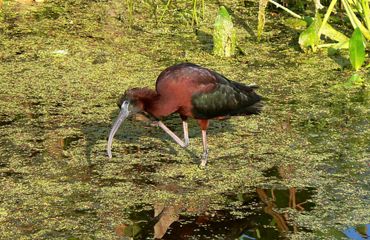
Brownsville is my favorite preserve to watch wildlife because of the numbers of birds, turtles and other creatures that inhabit the open salt marshes.
Go North: An hour’s drive will take you to Chincoteague National Wildlife Refuge, with excellent bird watching and opportunities to spot the famous ponies. Wind down with a swim or relax on the beach at the adjoining Assateague Island National Seashore—or find a spot to try your luck at surf fishing.
Eat & Drink: Along the way, the Island House Restaurant in Wachapreague is known not only for its seafood, but also for the views toward Parramore Island. In Chincoteague, OktoberForest partner Black Narrow Brewing is known for their limited edition Longleaf IPA, brewed using pine needles, bark and branches collected from TNC's Piney Grove Preserve.
Go South: Within a half-hour from Brownsville, Savage Neck Dunes Natural Area Preserve is a Chesapeake Bay gem—complete with spectacular sunsets. “The sand dunes are some of the highest points on the Eastern Shore and quite a stunning sight just before the view opens to the clear blue waters of the bay,” Ben says.
Visitors can also continue on to the Eastern Shore of Virginia National Wildlife Refuge. “If you’re spending a couple of days on the Eastern Shore, be sure to include the refuge’s Southern Tip Bike & Hike Trail.”
Eat & Drink: Along the way, the Machipongo Trading Company can perk you up with a locally roasted coffee or set you up with a picnic lunch. Cape Charles offers options for lodging, as well as dining.
Explore the Eastern Shore
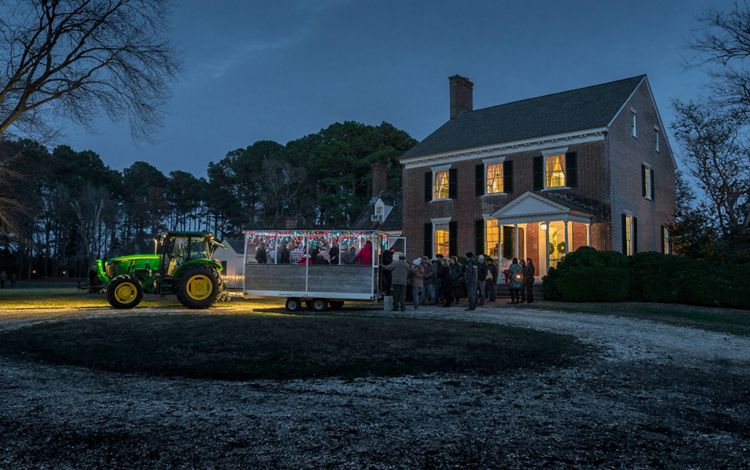
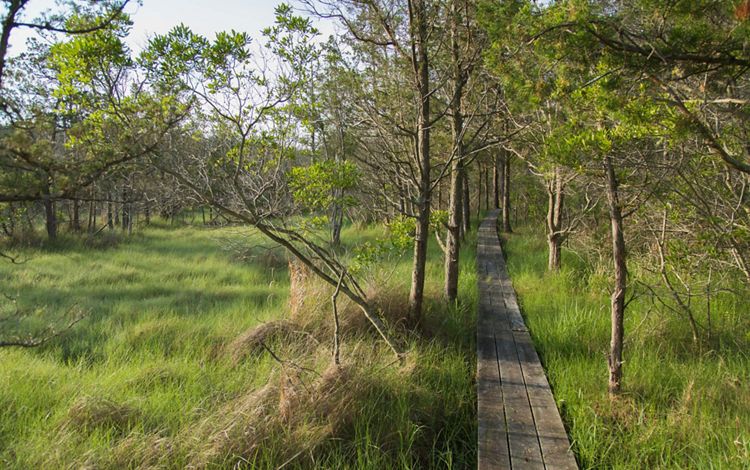
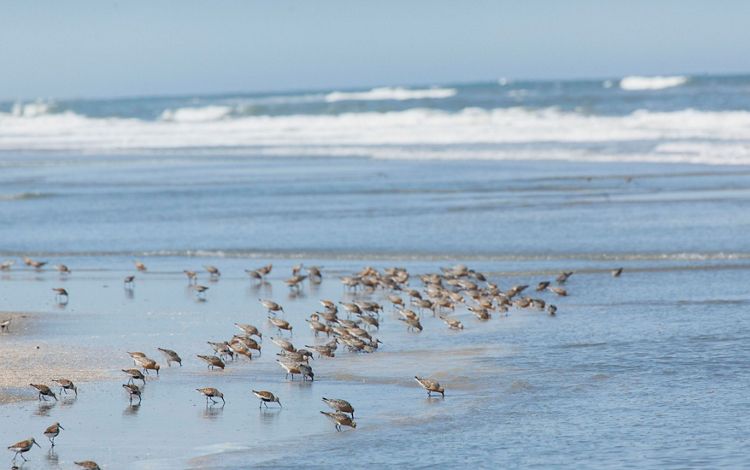
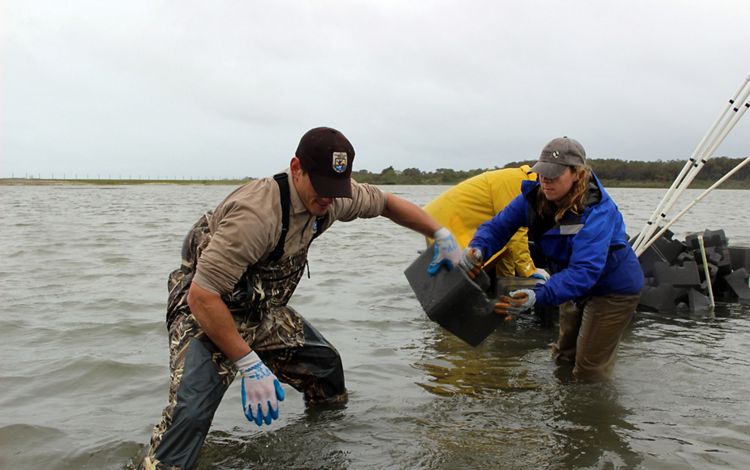
Eastern Virginia
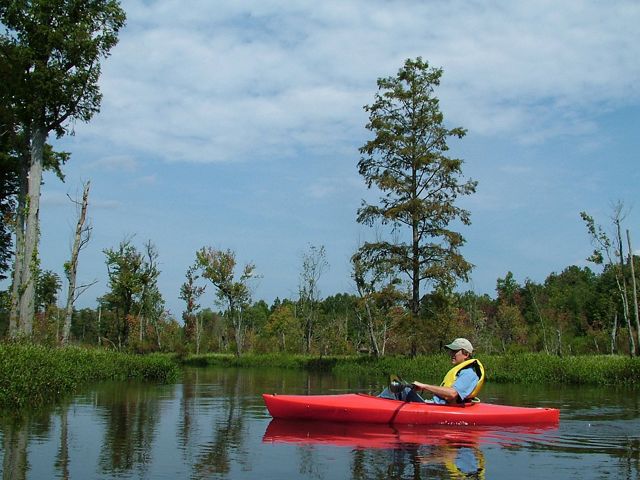
For a unique paddling experience, kayak a primeval blackwater stream through Dragon Flats Preserve. A TNC partner, Friends of Dragon Run, offers kayak trips with expert interpretation through this remote and otherwise inaccessible swamp.
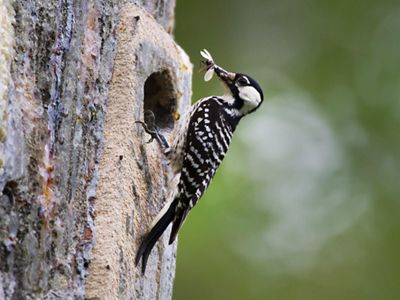
At Piney Grove Preserve, the soughing of the wind through the canopy sounds like the ocean yet also conveys the essence of a Southern forest. If you're lucky, you might also detect the distinctive raspy chirps of an endangered red-cockaded woodpecker as it forages for insects.
From February through October, the accessible Constance Darden Nature Trail provides an easy path through the forest to an observation deck. You can also sample Piney Grove’s sights along Route 604 (Chinquapin Road), a gravel road that traverses the preserve.
Go South:TNC worked with the state to protect Big Woods, and, as a result, thousands of acres adjacent to Piney Grove are available for outdoor recreation. A rich variety of wildflowers and wildlife thrives throughout this rare expanse of pine forest, so be on the lookout for creatures ranging from white-tailed deer to wild turkeys and bobwhite quail.
Go (South)West: For a different perspective, launch your kayak, canoe or motorboat on the Nottoway River at Peters Bridge. Traveling upstream, you will experience not only a scenic stretch of the river featuring numerous sandbars and good fishing, but also be able to see Chubb Sandhill Natural Area Preserve along the eastern bank on river right.
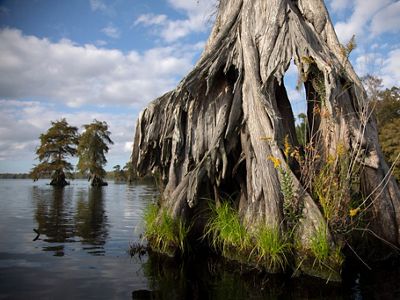
Go (South)East: TNC helped establish Great Dismal Swamp National Wildlife Refuge during the 1970s and continues to collaborate with the refuge on restoring habitat and the red-cockaded woodpecker. One of the largest forests in the East, Great Dismal Swamp offers world-class bird watching, hiking and biking trails steeped in history, and one of only two natural lakes in Virginia.
Eat & Drink: If you’re in the woods before the birds wake up, a hearty breakfast may be in order before the next leg of your adventure. A few minutes’ drive from Piney Grove, the Virginia Diner in Wakefield caters to hungry travelers. Even closer to Piney Grove, inhaling the aroma of traditional country ham at Adams’ Peanuts & Country Store is like journeying back in time.
Explore Eastern Virginia
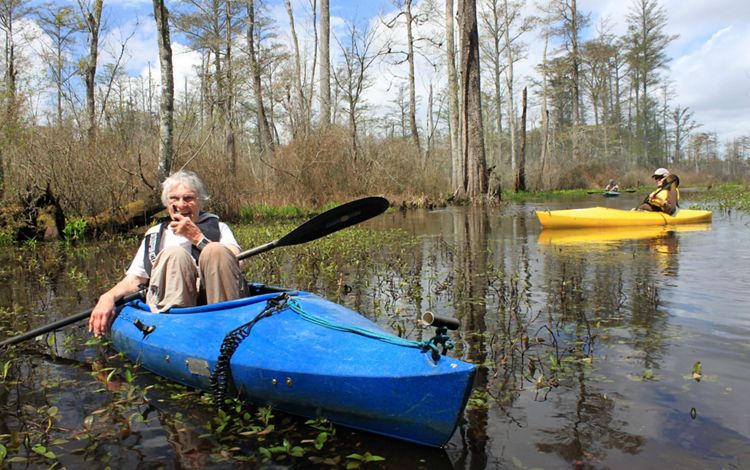
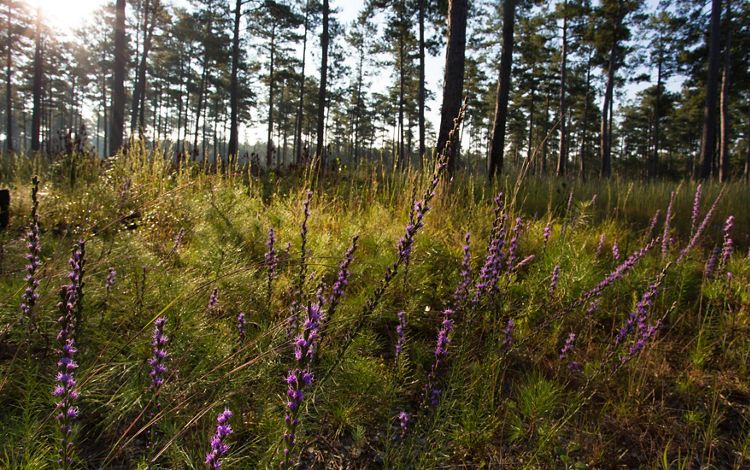
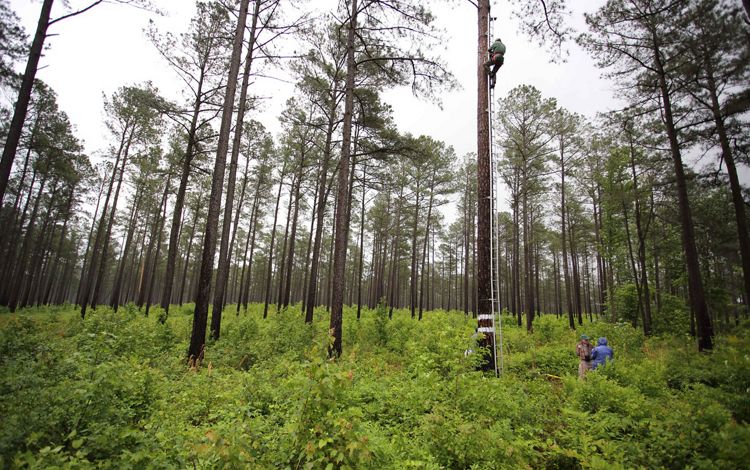
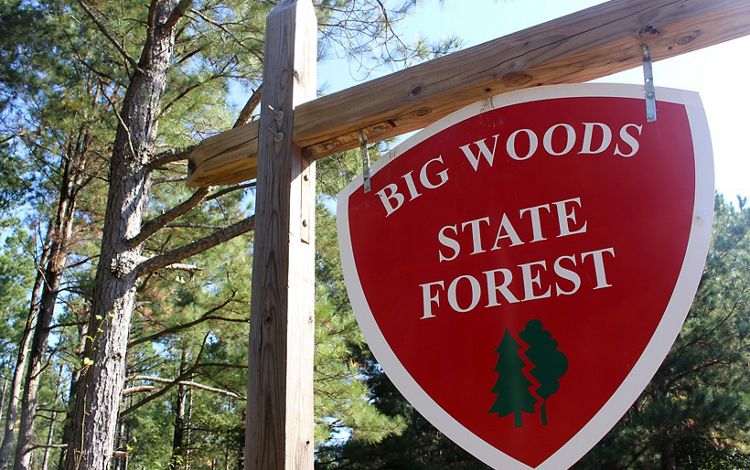
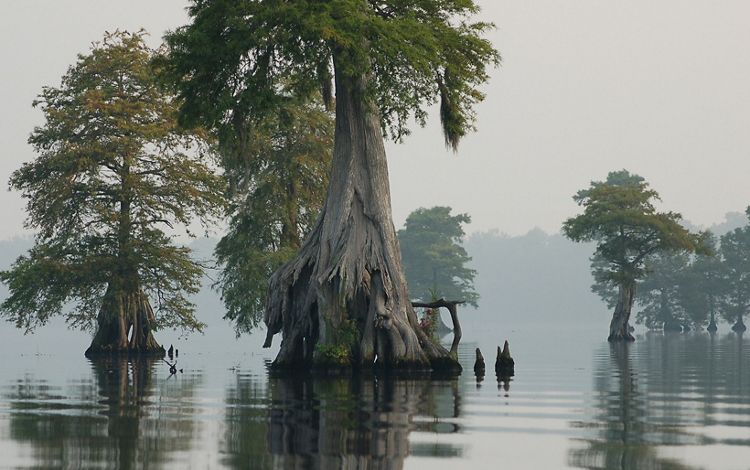
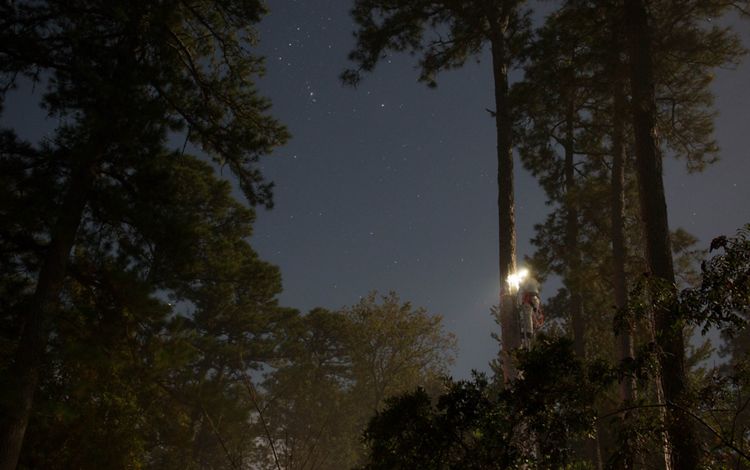
Central Virginia
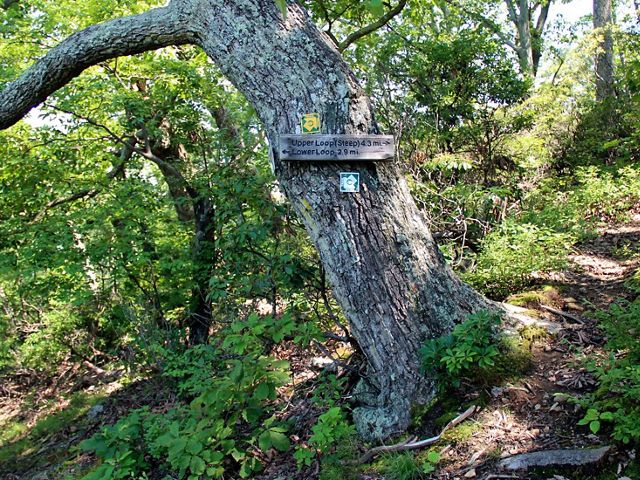
Fortune’s Cove Preserve rewards visitors with scenic mountain vistas and stunning displays of fall foliage. It’s easily accessible from Charlottesville (or Lynchburg), so it's no surprise that this Nelson County preserve is so popular with our staff.
“Fortune’s Cove is my favorite preserve to hike because of the views, the shade and the beauty that reminds me of home,” says Lyraya Showstack.
Land Steward Sam Truslow, who manages the preserve and its trails, recommends slowing down and paying close attention to your surroundings: “It’s just best to go slow and take your time and enjoy it; you will miss a lot if you go quickly.”
Quote

Go slow and take your time and enjoy it; you will miss a lot if you go quickly.
Go West: From the ridgetop at Fortune’s Cove, you can gaze across a sea of forest to The Priest, and a half-hour drive from the preserve will get you to the wilderness trailhead in the George Washington and Jefferson National Forests. A few more minutes will deliver you to the base of Crabtree Falls, one of Virginia’s most classic hikes.
Go North: The crown jewel of Virginia public lands is Shenandoah National Park. Many maps and guide books are available to help you plan a visit to Virginia’s only full-fledged national park, and, of course, there’s no shortage of opinions among our team.
Lyraya recommends Big Meadows for families, as young children will enjoy the visitor center, easy trails, and opportunities to see wildlife. Bird and wildlife watching are year-round draws at Shenandoah, one of the best places in Virginia to spot black bears.
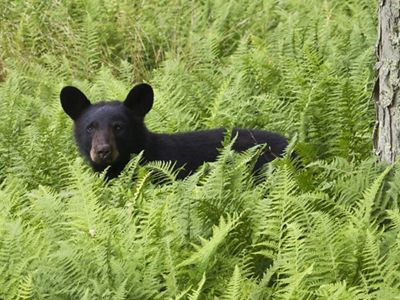
“I have seen lots of bears while cycling in the park,” says Patrick Dougherty. “One day I saw four during a one-hour ride.” If your legs are up to the task, consider parking your car and exploring Skyline Drive by bicycle.
Recommended hikes include the Rose River Loop, Appalachian Trail at Loft Mountain, and—for spectacular views and sunsets—the Stony Man cliffs near Skyland.
In Charlottesville: Ivy Creek Natural Area is Chris Bruce’s go-to destination for hiking and wildlife watching with his kids. Among his Ivy Creek highlights, Chris cites “seeing a barred owl swoop down the trail and land on a low branch right in front of us.”
Eat & Drink: Dr. Ho’s Humble Pie near North Garden caters to those craving the classic post-hike combo of beer and pizza. Between Fortune’s Cove and Shenandoah, Nelson 151 offers an abundance of craft brewers and restaurants specializing in local fare. Inside the national park, the New Market Taproom at Big Meadows Lodge serves local brews that you can sip outside while enjoying a spectacular sunset.
Explore Central Virginia

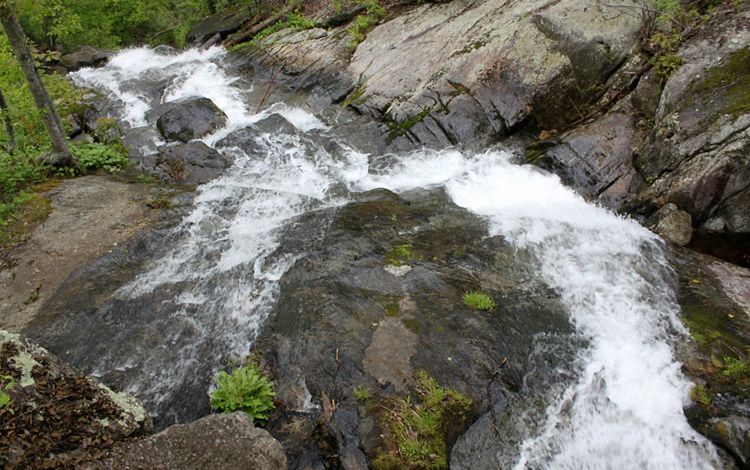
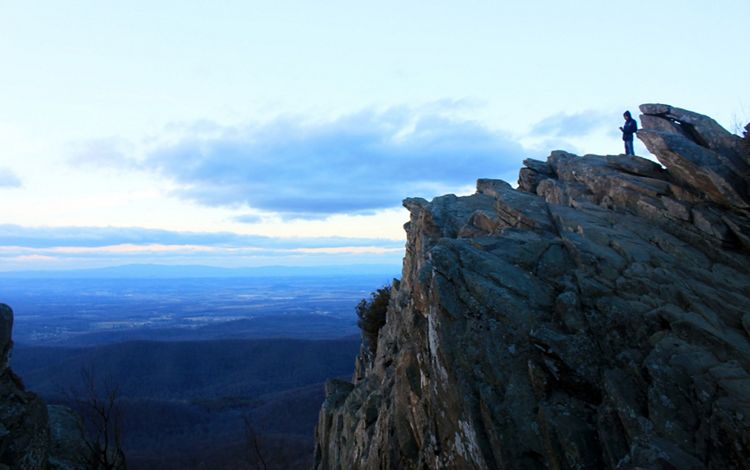
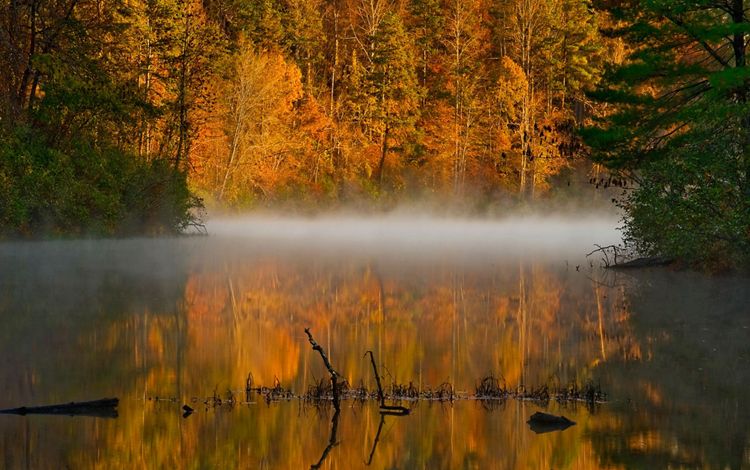
Northern Virginia
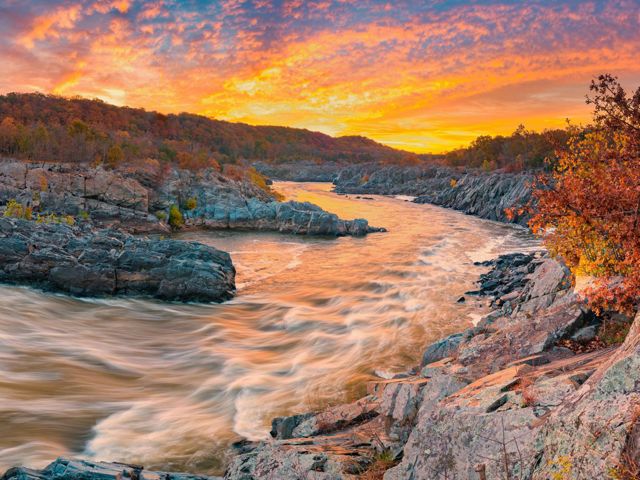
TNC's work in Northern Virginia dates at least to the 1950s when we helped build the groundswell of support that ultimately led to the establishment of Great Falls Park. Fraser Preserve provides scenic vistas along the Potomac Rivers.
From Mason Neck to Harpers Ferry, we’ve helped assemble many of the region’s most loved and iconic public lands. Whether you live in Fairfax, Alexandria, Arlington or anywhere else in NOVA, chances are that TNC has had a hand in protecting a local or regional park near you.
Quote
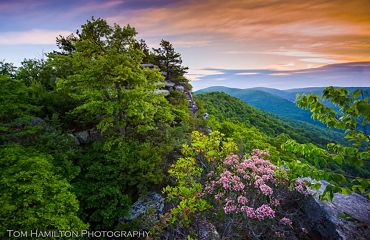
This hike offers some of the most beautiful mountaintop views that can be had in Northern Virginia.
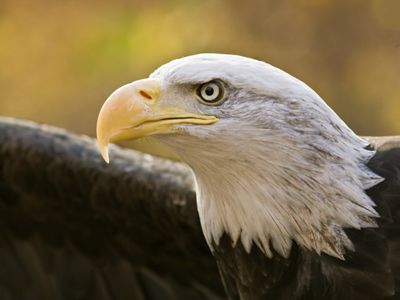
Go South (from D.C.): Volunteer photographer Tom Hamilton rates Mason Neck State Park and National Wildlife Refuge as the region’s best collaborative conservation area to visit. “In addition to preserving wintering grounds for migratory birds (tundra swans in winter!), Mason Neck has been instrumental in the resurgence of the bald eagle,” Tom says. “Every time I visit, I see several eagles.”
Go West: The payoff atop Big Schloss in the George Washington National Forest is well worth the effort to get there. “This hike offers some of the most beautiful mountaintop views that can be had in Northern Virginia,” says Tom.
Big Schloss can be a popular destination, especially on weekends. So plan your hike for a weekday, or consider the trail to nearby Tibbet Knob, which offers comparable views and greater chances of solitude.
Go Great: The Potomac River is the lifeblood of Northern Virginia, and nowhere is its majesty more in evidence than in the heart of the area at Great Falls Park. “Go for the fantastic spring wildflowers and year-round scenery in this spectacular gorge,” says Judy Dunscomb.
Explore Northern Virginia

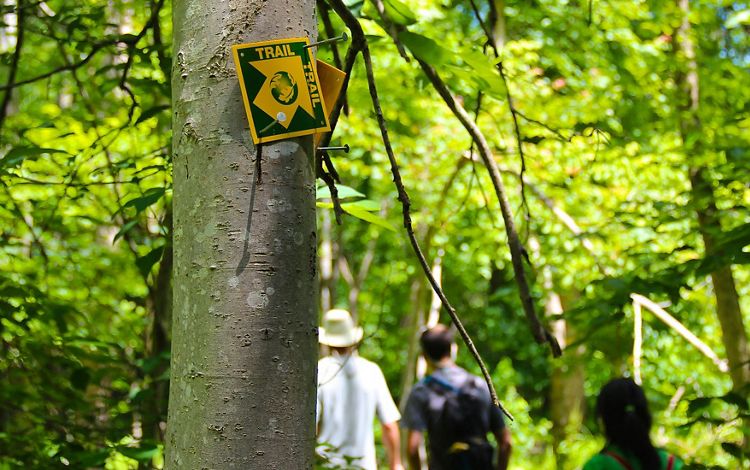

Western Virginia

Warm Springs Mountain Preserve is TNC’s flagship in western Virginia and a magnet for staff on and off the clock. Late spring and early summer bring a profusion of wildflowers to the forest floor, while autumn offers brilliant foliage across mountain vistas that seem to stretch into infinity.
“The views from Bear Loop Trail are some of the most amazing Virginia has to offer,” says Allegheny Highlands director Blair Smyth. The parking area and trailhead for this three-mile loop trail are located across from Ingalls Field Airport.
Quote
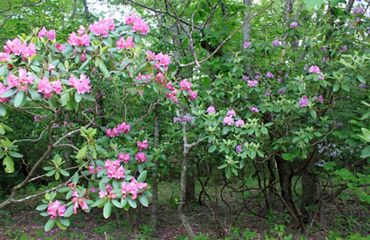
Come to Bath County and find your perfect campsite ... next to a babbling creek, old shady rhododendron and a few trees for stringing your hammock.
Go (South)East: Douthat State Park enjoys a growing reputation as one of Virginia’s premier destinations for mountain biking. After a day of riding or hiking, cool off with a relaxing dip in the lake during the warmer months. You can even hike to Douthat from Warm Springs Mountain via the Sandy Gap Trail.
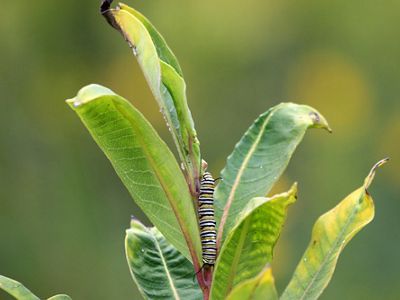
Go West: Camp at Hidden Valley Recreation Area and explore wildflower meadows, the Jackson River and Civil War history in this special corner of the George Washington National Forest. In addition to camping, Lake Moomaw offers exceptional scenery, fishing and boating.
“Come to Bath County and find your perfect campsite in the national forest,” says Laurel Schablein. “The kind of spot you’ll want to return to again and again—next to a babbling creek, old shady rhododendron and a few trees for stringing your hammock.”
Go North: “Explore the winding roads that weave through charming rural towns and the unspoiled forested landscapes of the Allegheny Mountains,” Laurel says. “Continue to the northernmost point of the Warm Springs Ranger District and you’ll reach the remote, one-of-a-kind Laurel Fork. Characterized by high-elevation Northern hardwood forest and montane red-spruce, it’s perhaps the most tranquil place you’ve ever been.”
Eat & Drink: The historic Omni Homestead in Hot Springs offers fine dining, along with plush accommodations for non-campers. Craft brews and a more casual atmosphere can be found nearby at Bacova Beer Company. In Warm Springs, the Inn at Gristmill Square’s Waterwheel Restaurant features elegant dinners and brunches, a wine cellar, and a cozy pub.
Explore Western Virginia
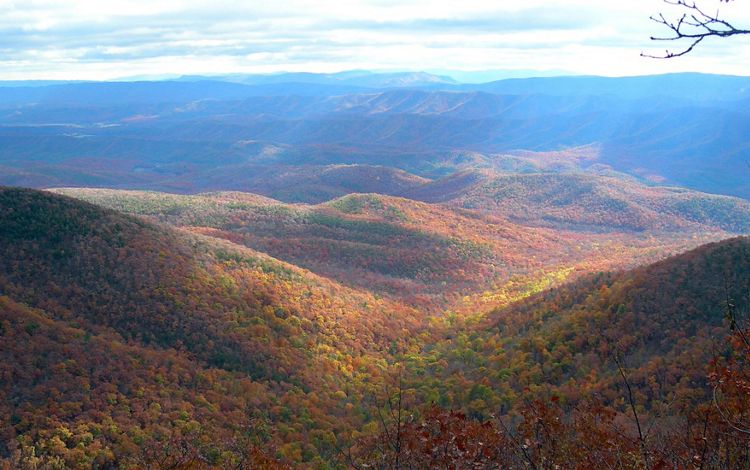
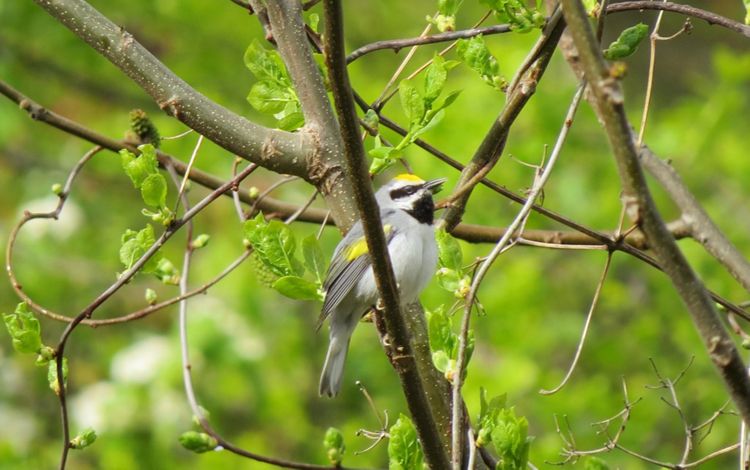

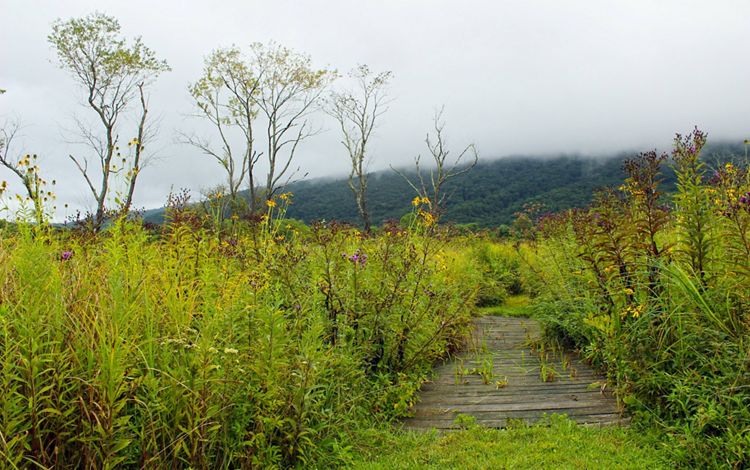
Southwestern Virginia
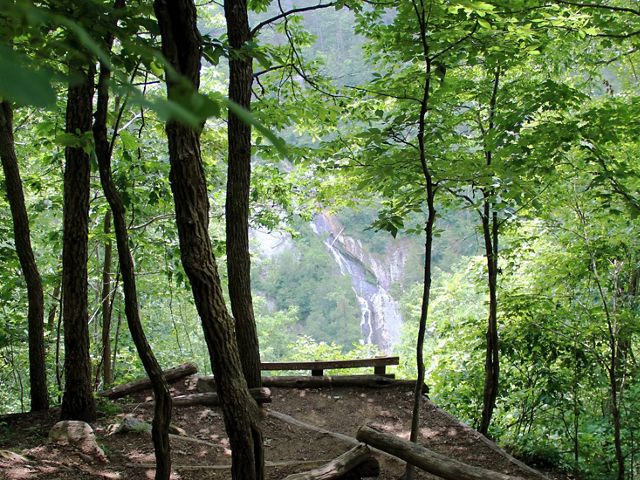
Bottom Creek Gorge Preserve near Roanoke boasts a 200-foot waterfall, a gorgeous mountain stream, miles of trails and several staff votes for favorite Virginia preserve.
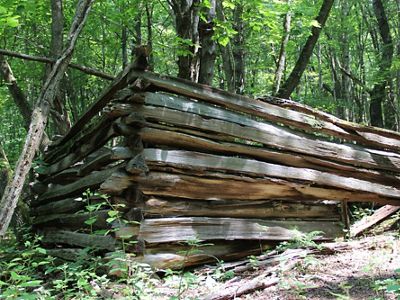
“I’m fascinated by the human history of Bottom Creek Gorge and its pre-Civil War cabins,” says Karen Schuyler. “I also like looking down into the gorge and being above the soaring hawks,” she adds.
Go West: An hour’s drive will take you to Claytor Lake State Park, best known for boating and sport fishing opportunities. You can go west for a really long time in Virginia, a point that’s driven home when you set out to explore the Clinch Valley.
Go Deep: Reminiscent of a southern Utah slot canyon, the highlight of Channels Natural Area Preserve and surrounding state forest is descending into a mountaintop via maze-like passages winding through ancient sandstone.
Go (Farther) West: Explore the Clinch and Powell River watersheds in the lightly visited westernmost tip of Virginia. “This area reminds me of what the southern Appalachians would have looked like hundreds of years ago,” says Clinch Valley team member Ronald Lambert. “We offer hiking, biking, canoeing and caving that the whole family can enjoy.” Two destinations with excellent public access are Cumberland Gap National Historical Park and Natural Tunnel State Park.
Eat & Drink: “After a trip to The Cedars, there is nothing like a visit to The Dutch Treat for a fresh-made sandwich on homemade sourdough bread,” Ronald says. The towns of Damascus, Abingdon and St. Paul (on the Clinch River) are all home to craft breweries and locally sourced restaurants.
Explore Southwestern Virginia
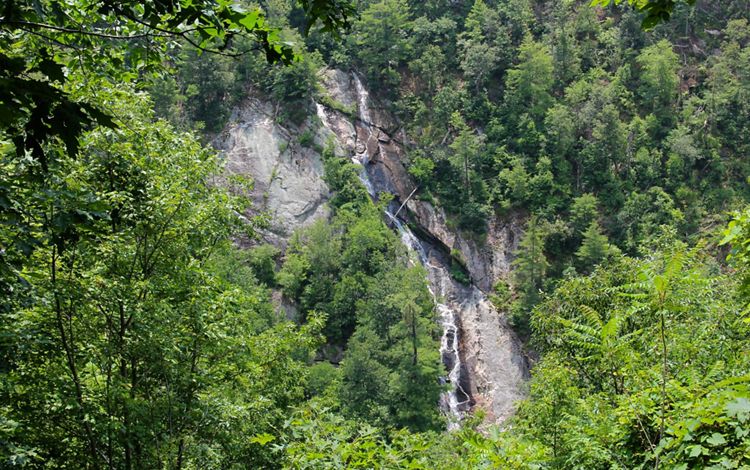
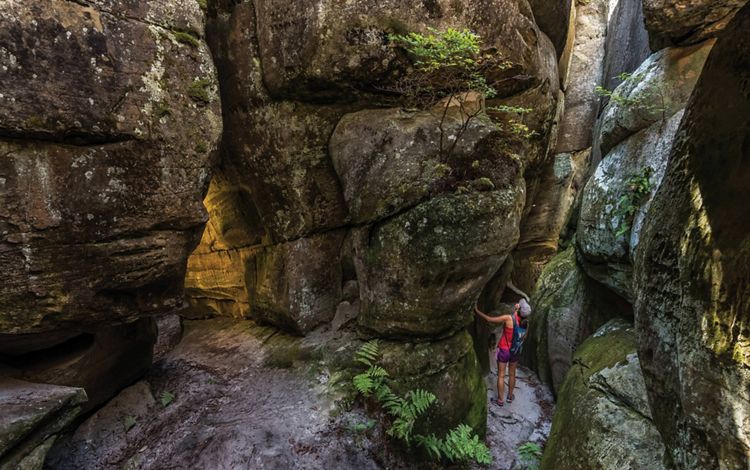
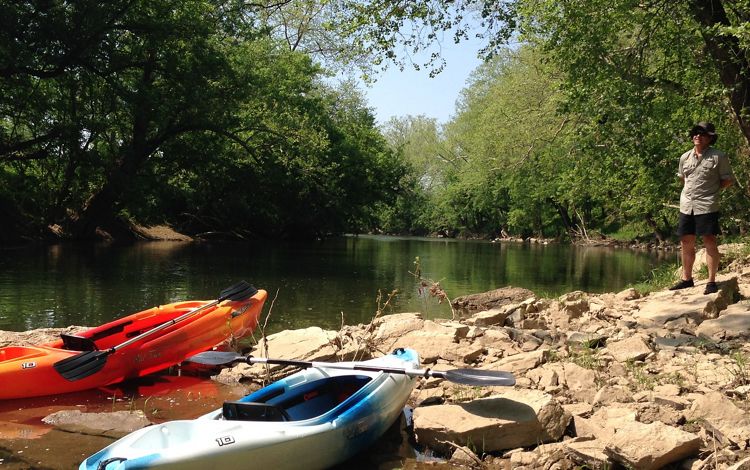

We Can’t Save Nature Without You
Sign up to receive monthly conservation news and updates from Virginia. Get a preview of Virginia's Nature News email
